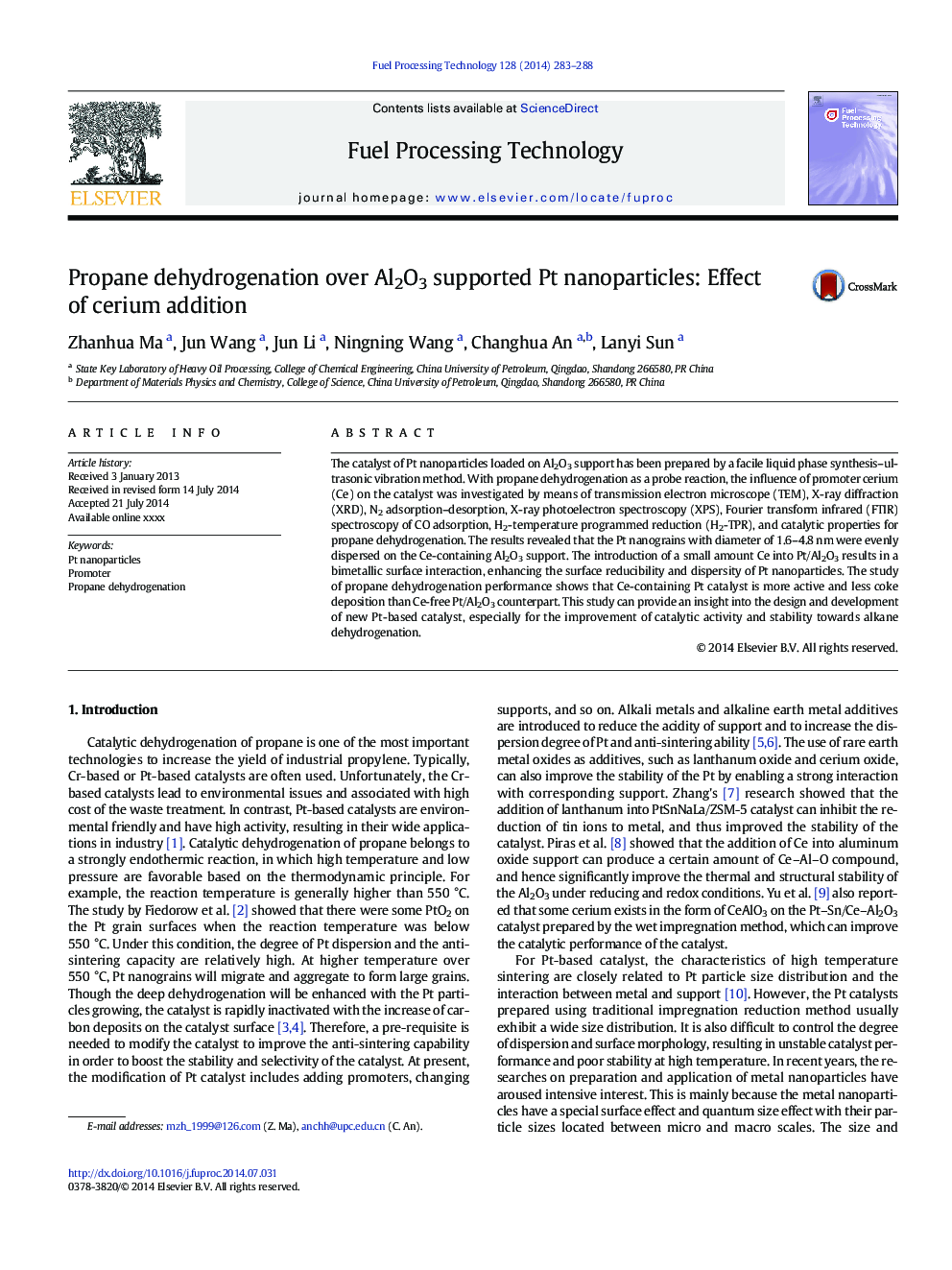| Article ID | Journal | Published Year | Pages | File Type |
|---|---|---|---|---|
| 6657176 | Fuel Processing Technology | 2014 | 6 Pages |
Abstract
The catalyst of Pt nanoparticles loaded on Al2O3 support has been prepared by a facile liquid phase synthesis-ultrasonic vibration method. With propane dehydrogenation as a probe reaction, the influence of promoter cerium (Ce) on the catalyst was investigated by means of transmission electron microscope (TEM), X-ray diffraction (XRD), N2 adsorption-desorption, X-ray photoelectron spectroscopy (XPS), Fourier transform infrared (FTIR) spectroscopy of CO adsorption, H2-temperature programmed reduction (H2-TPR), and catalytic properties for propane dehydrogenation. The results revealed that the Pt nanograins with diameter of 1.6-4.8Â nm were evenly dispersed on the Ce-containing Al2O3 support. The introduction of a small amount Ce into Pt/Al2O3 results in a bimetallic surface interaction, enhancing the surface reducibility and dispersity of Pt nanoparticles. The study of propane dehydrogenation performance shows that Ce-containing Pt catalyst is more active and less coke deposition than Ce-free Pt/Al2O3 counterpart. This study can provide an insight into the design and development of new Pt-based catalyst, especially for the improvement of catalytic activity and stability towards alkane dehydrogenation.
Related Topics
Physical Sciences and Engineering
Chemical Engineering
Chemical Engineering (General)
Authors
Zhanhua Ma, Jun Wang, Jun Li, Ningning Wang, Changhua An, Lanyi Sun,
